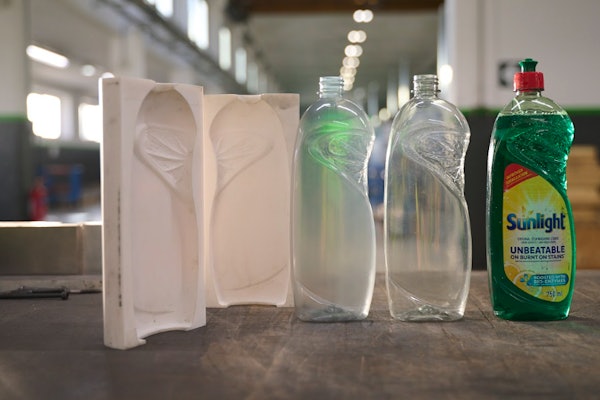
“One, if by land, and two, if by sea,” is a quote that refers to the number of lanterns to be displayed in a Boston church steeple to alert colonists of the route by which British soldiers were advancing on Concord on the eve of the American Revolutionary War. The protagonist in the historic tale is the horseman, Paul Revere, he of “The-British-are-coming” fame. If Revere were a modern-day supply chain manager explaining the number of modes in intermodal transportation, he might say, “Two, if by land, and one, if by sea.”
The conveyances are flatbed trucks, double-stack railcars, and container ships, transporting intermodal containers, loaded (typically) with palletized packaged goods. There are other types but the intermodal containers referred to herein are rectangular metal enclosures. Available in different standardized lengths, in their longer versions they resemble a truck trailer, sans the wheels.
The practicality of intermodal transportation depends on distance. A company that only ships regionally would use trucks exclusively, regardless of whether containers are involved. In contrast, a company that is shipping containers, say, coast-to-coast, likely would find it more economical to use railcars for the long-haul portion. Trucks would take care of the short-haul portions, transporting containers to the departure railyards and away from the arrival railyards. For overseas shipping of containers, container ships are mandatory, and depending on the distance to the domestic port, trucks alone, or truck and rail get the containers to the port. At the foreign port, truck and rail take over, this time depending on the distances to delivery points.
In addition to optimizing the rate charges of the utilized modes, intermodal transportation has an inherent cost-saving in material handling: the container is handled as a unit as it is placed on one mode of transportation or transloaded onto another. Saved are the time and labor that otherwise would be required to individually handle palletized loads. Not to be overlooked, however, is that container handling is performed with specialized equipment, of which human operators differ in their skills in maintaining the containers on a level plane.
Whatever the combination of transportation modes, the shipment has to survive them all, a requirement alternatively expressed as having to survive the toughest leg of the shipment. Either viewpoint requires knowledge of the hazards imposed by the individual modes.
Cargo inside a truck trailer is exposed to acceleration, deceleration, vibration, shock, and compression. With railcar, the aforementioned forces are present, but with different characteristics; for example, over-the-rails vibration is more harmonic than the over-the-road type. Then there’s container ship. If cargo were alive, it would be susceptible to seasickness, given that a container ship undergoes roll, pitch, yaw, heave, sway, and surge−nautical terms of motions translating to up and down, forward and back, and side to side. Add to that the hazard of water (waves and ocean spray) that can wet the cargo when the container has not been properly inspected for ruptures in the sides, roof, and floor, and worn sealing gaskets on the doors. With each mode, just the variety of hazards is challenging enough, but compounded by the fact that they don’t occur in any standardized combination nor sequence.
Research, testing, and experience can give a company the confidence that it knows the minimum properties that its palletized packaged cargo should embody for intermodal transportation. Still the company should not be opposed to adding a margin of safety, especially for overseas shipments. It’s cheap insurance, given the difficulties of solving problems when great distances and different time zones are involved.
Regardless of the strength and integrity of the cargo, it can’t be haphazardly placed into a container and expected to arrive intact. While that’s common sense, less so is what, exactly, is required to have the container arrive at destination with its cargo intact. It comes done to how the cargo is loaded and how it’s secured.
Cargo needs to be loaded such that the weight is properly balanced and distributed. Regarding trucks, the loaded container needs to match up with axle load limits, in addition to limits on the combined weight of the container-on-chassis, among other restrictions. If the pallet loads are of varying weights, the heaviest ones should be positioned toward the front of the container. Another consideration is that a properly loaded container is easier for an equipment operator to handle. Advisable is a load diagram—whether composed manually or by software—depicting where each pallet is to be placed within the container. For increased efficiencies, it’s further advisable to stage the entire shipment at dockside before beginning the loading.
Once the cargo is properly loaded, the challenge shifts to securing it, meaning rendering it immobile and resistant to the hazards and forces discussed earlier. To the extent feasible, cargo should be placed against the sidewalls of the container, along its length, and if there are voids between the sidewalls, they should be filled with inflatable bags or comparable equipment. Bulkheads in the front and back of the container might also be required. When that’s the case, the bulkheads should be constructed of lumber of a specified species and dimensions, for example 2 in x 4 in yellow pine. Even the size of the nails should be specified. A poorly constructed bulkhead will give way, allowing the cargo freedom of movement, assuring damage.
With so much talk going on these days about balance of trade, it should be kept in mind that intermodal shipping, along with its packaging-related factors, are integral components. In the history of transportation, intermodalism is nothing short of a revolution; as such, were Paul Revere a modern-day supply chain manager, he would embrace the concept.
______________________________________________________________________________
Sterling Anthony is a consultant, specializing in the strategic use of marketing, logistics, and packaging. His contact information is: 100 Renaissance Center; P.O. Box 43176; Detroit, MI 48243; 313-531-1875 office; 313-531-1972 fax;[email protected];www.pkgconsultant.com.






















